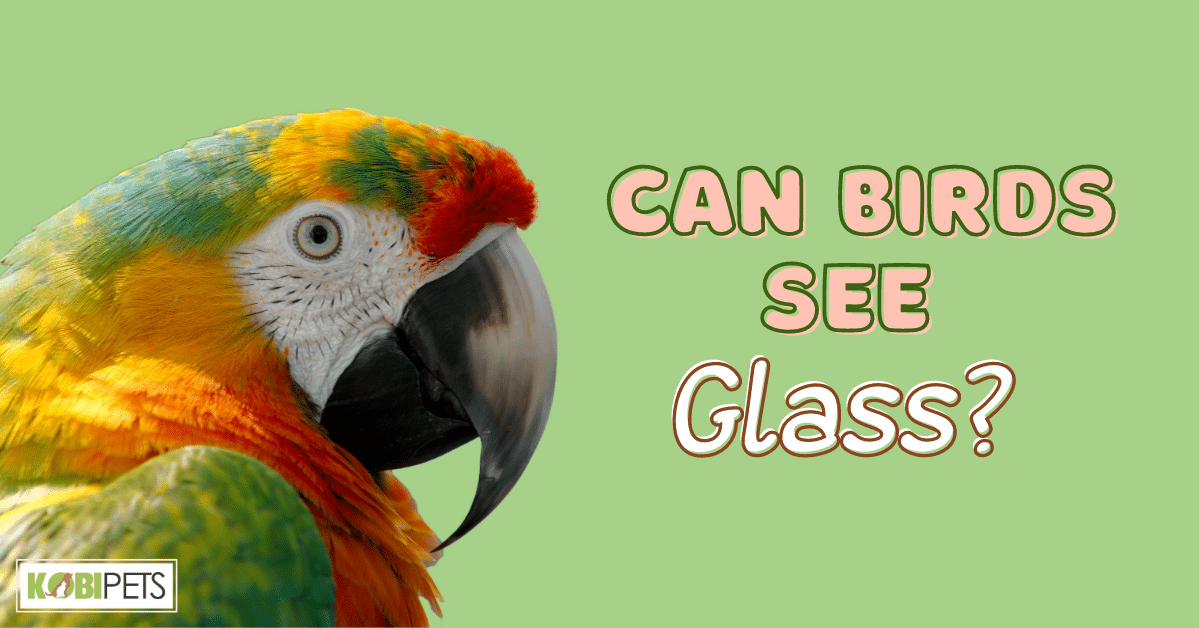
Birds often struggle to perceive clear glass because it’s either invisible to them or reflects the environment, making it look like an extension of their surroundings. As a result, millions of birds collide with windows each year, leading to fatal injuries. Implementing bird-safe designs or using decals can help reduce these tragic incidents, making urban environments safer for our avian friends.
During a peaceful morning coffee, a sudden thud startled me—a dazed robin had crashed into my window. This all-too-common scene prompts the question: Why can’t birds see windows? Let’s delve into the world of avian vision and its sometimes tragic encounters with our transparent barriers.
The Science Behind Birds’ Vision
Birds possess a fascinatingly unique visual system that greatly differs from our own. Unlike humans, many bird species can perceive ultraviolet (UV) light, granting them an expanded spectrum of colors. Their field of view is broader due to the positioning of their eyes, allowing them to perceive a larger portion of their surroundings.
Additionally, their ability to differentiate colors surpasses ours, making their world vibrantly rich in hues we can’t even imagine.
However, this intricate vision system has its limitations, especially in urban environments. The very factors that make their sight exceptional may contribute to their inability to recognize clear glass as an obstacle, leading to those heart-wrenching window collisions.
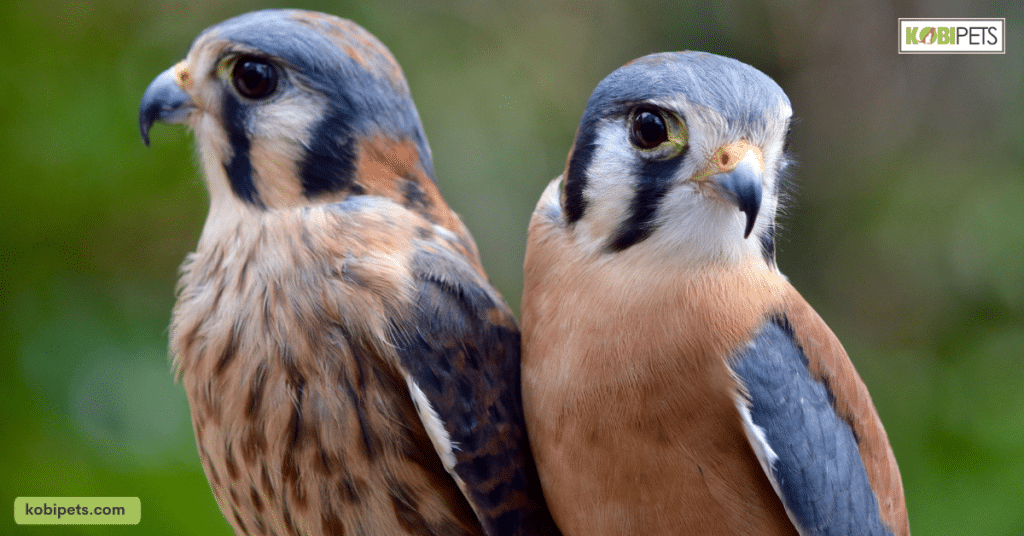
Glass: Invisible Obstacle or Deadly Mirror?
Glass, for all its transparency and reflective beauty, poses a dual threat to our avian neighbors. First, there’s the issue of invisibility. Clear glass, especially when impeccably clean, can be almost indiscernible for birds. Unlike humans, who have learned to associate transparent barriers with potential obstructions, many birds lack this contextual understanding. They see an open pathway, not recognizing the clear glass as a barrier, and fly straight into it.
On the other hand, windows, particularly those with a mirror finish or those hit by certain angles of sunlight, transform into deceptive mirrors. These reflective surfaces project images of the sky, trees, or other natural vistas. To a bird, this doesn’t appear as a reflection but rather as a continuation of their environment.
So, when they attempt to fly into what looks like a clear stretch of sky or a nearby tree, they’re met with the unforgiving solidity of glass. This dual nature of glass—as an invisible obstacle and a deadly mirror—makes it one of the most significant urban challenges birds face today.
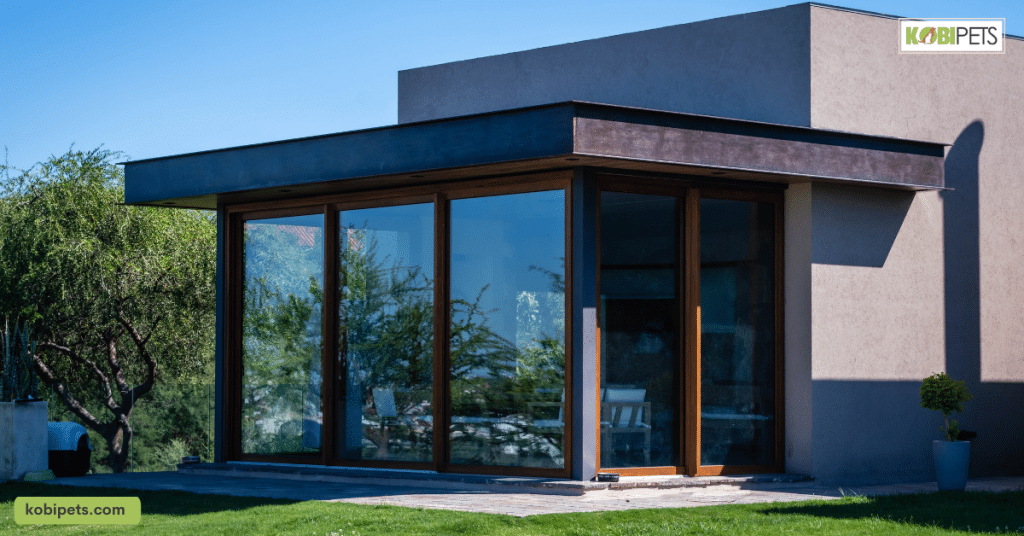
The Staggering Impact: Statistics on Bird-Window Collisions
Bird-window collisions are a lesser-known, yet significant, ecological concern in our urbanized world. The data we’ve gathered sheds light on the magnitude of this issue and its broader implications.
Table: Statistics on Bird-Window Collisions
| Statistic Category | Data |
|---|---|
| Global bird-window collision incidents | Estimated 1 billion/year* |
| U.S. bird-window collision incidents | Estimated 365-988 million/year** |
| Endangered species most affected | Golden-winged Warbler, Florida Scrub-Jay |
| The rate of population decline due to collisions | Varied by species but significant for those already at risk |
| Ecological repercussions | Disrupted pollination and seed dispersal, imbalanced insect populations |
*Based on studies from the American Bird Conservancy and other sources.
**Estimations from the Cornell Lab of Ornithology’s study.
The data underscores a pressing concern: our modern infrastructures are unintentionally threatening the avian population. Beyond the immediate fatalities, there’s a cascading effect on ecosystems, particularly when pollinators or seed dispersers are affected. Addressing this issue is not just about saving birds, but also about maintaining ecological balance in our urban landscapes.
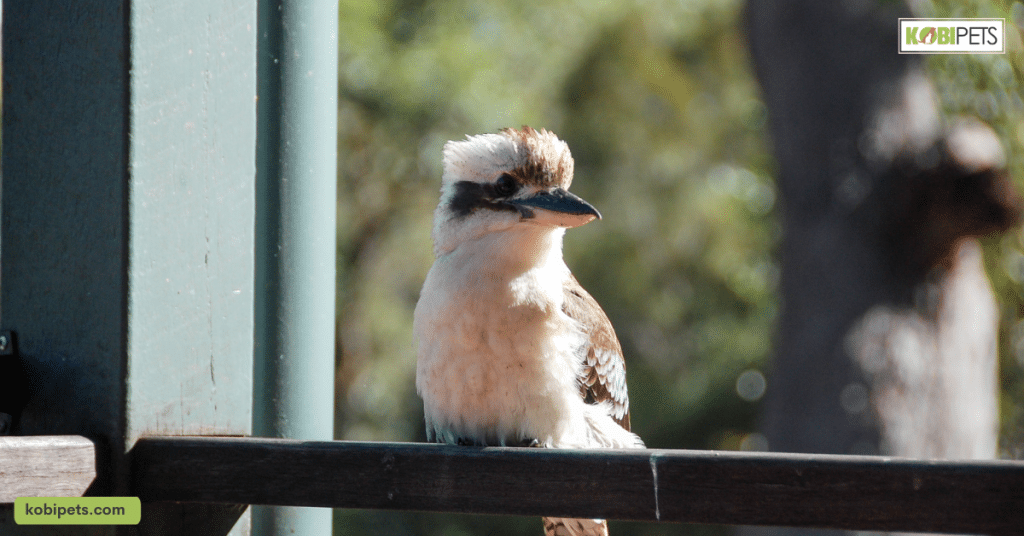
Solutions and Preventative Measures for Bird Safety
As the statistics surrounding bird-window collisions become increasingly prominent, it has spurred a union of innovators, conservationists, and concerned citizens. Together, they are channeling efforts to devise and popularize solutions that aim to make our concrete jungles safer for the avian world.
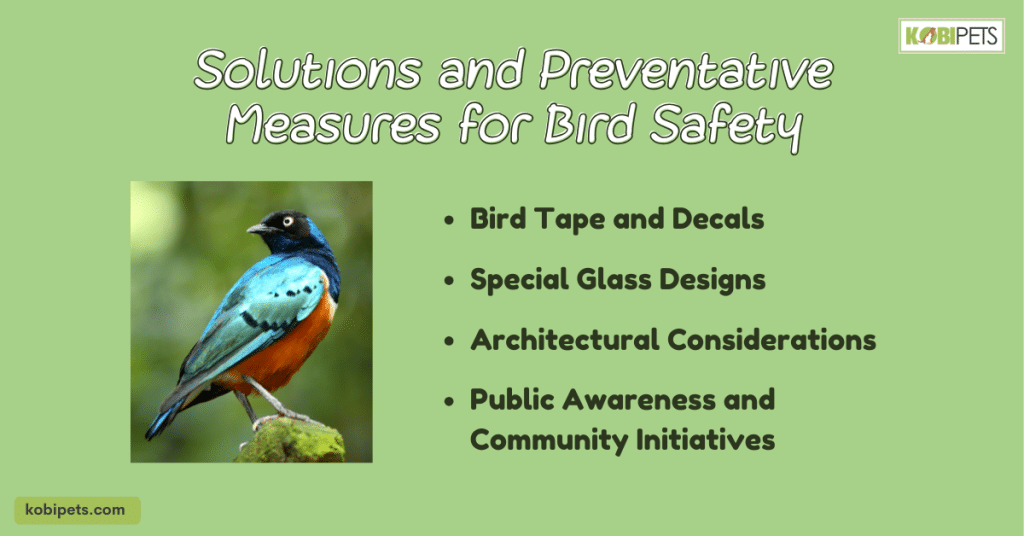
Solutions and Preventative Measures for Bird Safety
Bird Tape and Decals
Bird tape and decals act as visual barriers. When strategically placed on windows, they interrupt the reflection or transparency that typically confuses birds. The patterns, often resembling horizontal or vertical stripes, are spaced in a manner that allows birds to recognize the presence of a barrier.
Some designs even mimic natural predators or obstacles, serving as a deterrent. Easy to apply and relatively inexpensive, these are a popular choice for many homeowners and businesses.
Special Glass Designs
The world of glass manufacturing has seen remarkable advancements tailored to address the bird collision challenge. Glass with UV-reflective patterns is particularly promising. While these patterns remain virtually invisible to the human eye, birds can see them clearly. Another innovative approach is the production of glass that has patterns mimicking spider webs, a natural obstacle birds are evolutionarily conditioned to avoid. Such special designs aim to reduce collisions without compromising the aesthetics or functions of windows.
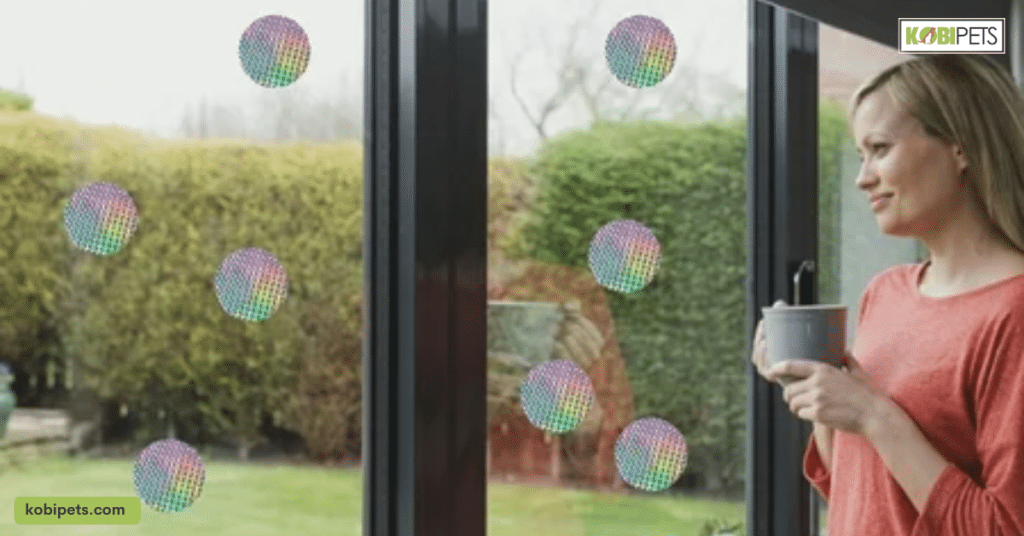
Architectural Considerations
As the construction landscape evolves, bird safety is becoming an integral aspect of architectural planning. Architects are incorporating external screens or mesh barriers that break window reflections or make them less appealing to birds.
Using shutters or external shades not only conserves energy but also provides a visual cue for birds. Further, the strategic placement of indoor plants or vegetation outside windows can deter birds, signaling that the area isn’t a part of their flight path.
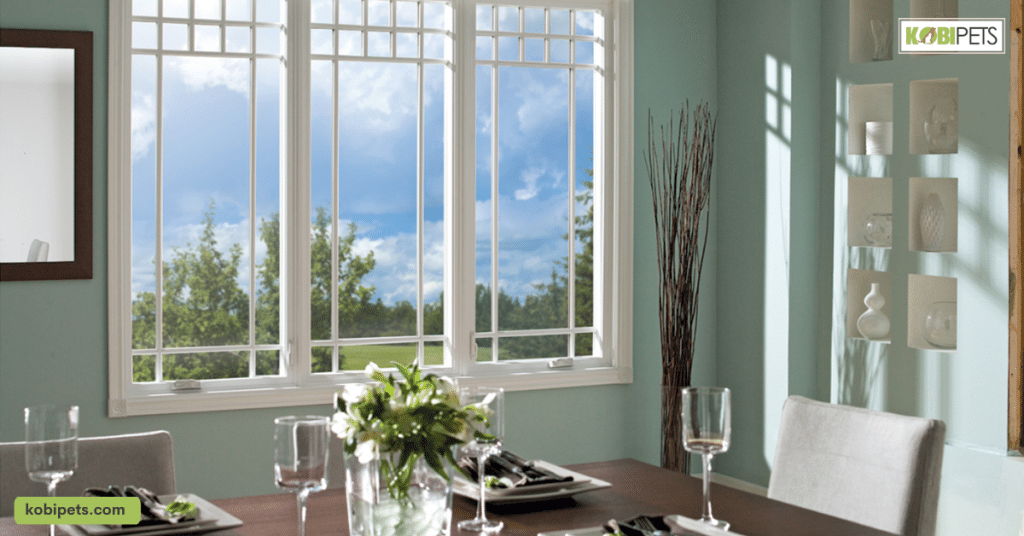
Public Awareness and Community Initiatives
The power of the community can’t be underestimated in addressing the bird collision issue. Educating the public about the risks windows pose to birds and the simple steps they can take to mitigate these risks can bring about significant change.
Workshops, community events, and national campaigns focused on bird safety are crucial. Moreover, collective efforts such as neighborhood watch groups or community challenges can inspire more people to adopt bird-friendly measures.
The journey to tackle bird-window collisions is multi-faceted, requiring innovative solutions, public awareness, and collective action. The increasing array of solutions, from user-friendly decals to pioneering architectural designs, paints an optimistic picture. With each step we take, we move towards creating urban spaces where birds can thrive alongside us.
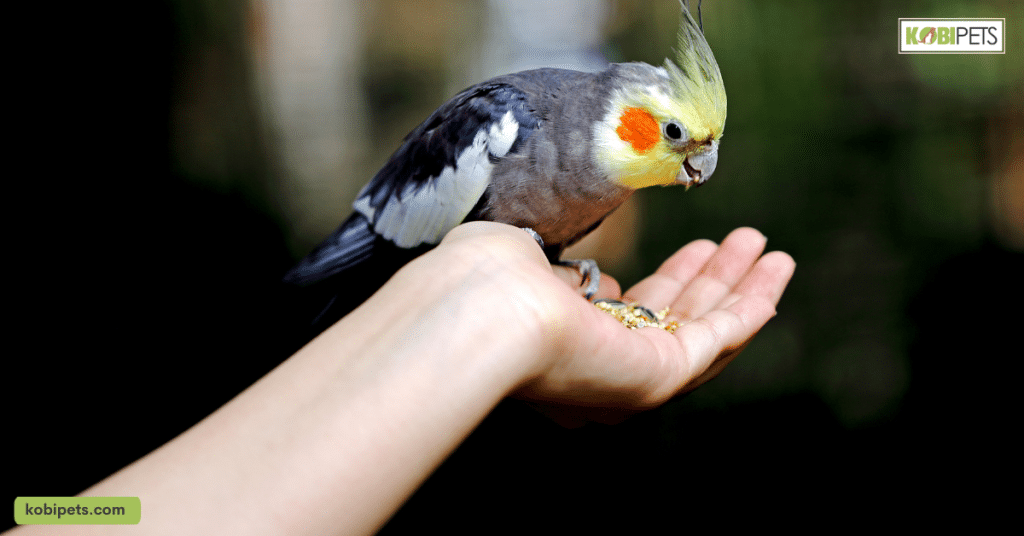
Conclusion
Urban environments, teeming with human activity, are shared spaces with nature, especially our feathered friends. Recognizing and addressing the challenges birds face, like window collisions, is everyone’s responsibility.
By adopting bird-safe solutions or simply raising awareness, we all can play a role. The vision is clear: cities buzzing with human endeavors, harmoniously intertwined with the songs and presence of birds. Through collective action and understanding, such a future is within reach.






